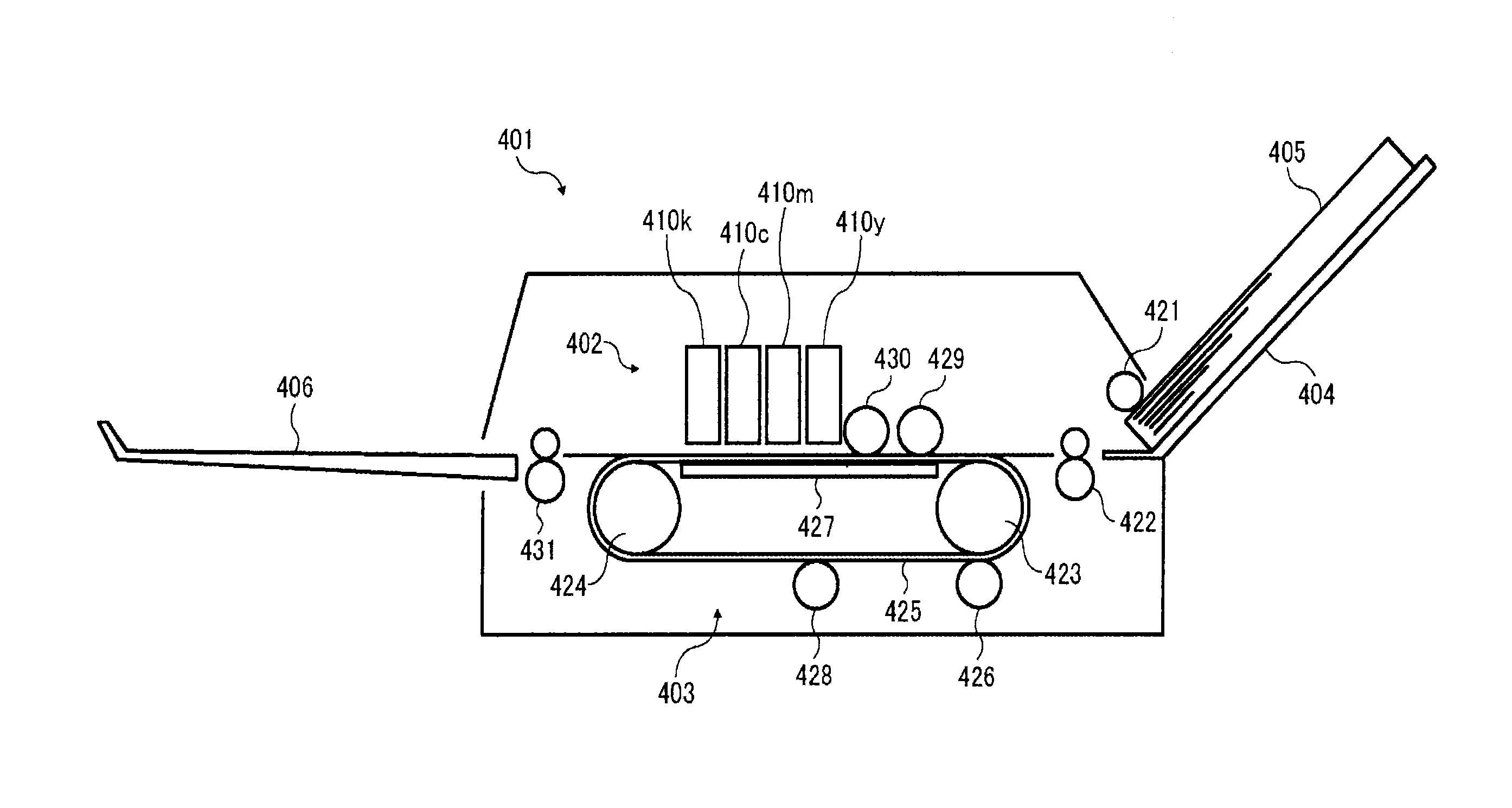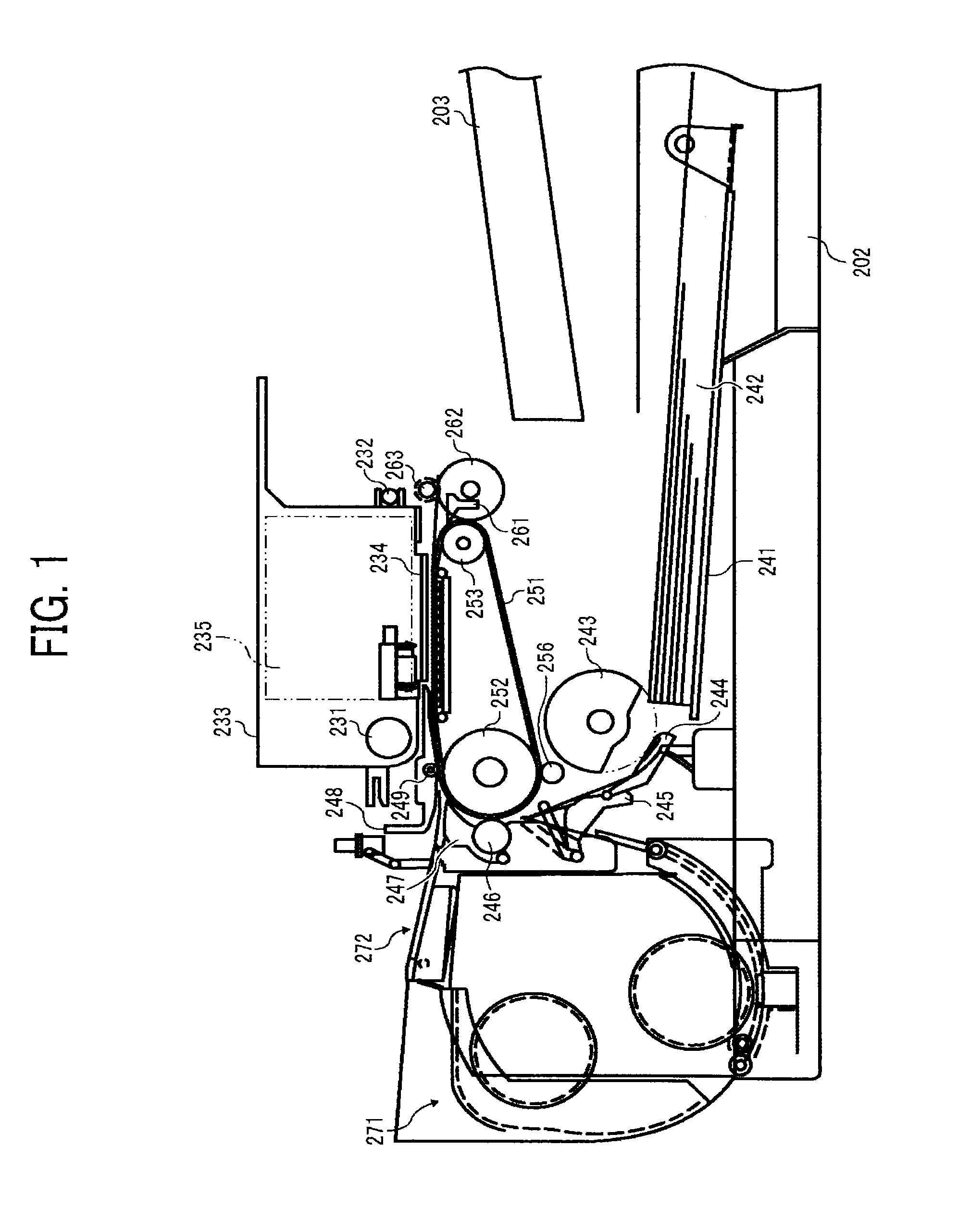Ink for inkjet recording, image forming method, image forming apparatus and image formed material
a technology of inkjet printing and inkjet printer, which is applied in the direction of non-fibrous pulp addition, instruments, transportation and packaging, etc., can solve the problems of paper being difficult to feed smoothly in inkjet printers. , to achieve the effect of preventing ink anchorage in retainers, reducing curl after printing, and good storage stability
- Summary
- Abstract
- Description
- Claims
- Application Information
AI Technical Summary
Benefits of technology
Problems solved by technology
Method used
Image
Examples
examples
[0146]Having generally described this invention, further understanding can be obtained by reference to certain specific examples which are provided herein for the purpose of illustration only and are not intended to be limiting. In the descriptions in the following examples, the numbers represent weight ratios in parts, unless otherwise specified.
preparation example 1
Preparation of Surface-Modified Black Pigment Dispersion I
[0147]By means of Silverson Mixer (6,000 rpm), 100 g of Black Pearls (registered trade mark) 1000 (carbon black having a BET specific surface area of 343 m2 / g and DBPA of 105 mL / 100 g) from Cabot Corporation, 100 mmol of sulfanilic acid, and 1 L of ion-exchanged ultrapure water were mixed at room temperature. In the case where the pH of the obtained slurry was higher than 4, 100 mmol of nitric acid was added to the slurry. Thirty minutes later, sodium nitrite (100 mmol) dissolved in a small amount of ion-exchanged ultrapure water was gradually added to the aforementioned mixture. The resulting mixture was heated to 60° C. with stirring, and was allowed to react for 1 hour, to thereby generate a modified pigment, in which the sulfanilic acid was added to the carbon black. Subsequently, pH of the resultant was adjusted to 9 with a 10% tetrabutylammonium hydroxide (methanol) solution. Thirty minutes later, a modified pigment dis...
preparation example 2
Preparation of Surface Modified Black Pigment Dispersion II
[0148]Into Process All 4HV Mixer (4 L), 500 g of Black Pearls (registered trade mark) 880 (carbon black having a BET surface area of 220 m2 / g and DBPA of 105 mL / 100 g) from Cabot Corporation, 1 L of ion-exchanged ultrapure water, and 175 mmol of 4-aminobenzoic acid. Subsequently, the resulting mixture was strongly mixed at 300 rpm, for 10 minutes with heating to 60° C. To the resultant, a 20% sodium nitrite aqueous solution [175 mmol equivalent based on the 4-aminobenzoic acid] was added over 15 minutes. The resulting mixture was mixed and stirred for 3 hours with heating to 60° C. The resulting reaction product was taken out by diluting with 750 mL of ion-exchanged ultrapure water. Subsequently, pH of the resultant was adjusted to 9 with a 10% tetrabutylammonium hydroxide (methanol) solution. Thirty minutes later, a modified pigment dispersion was obtained. Ultrafiltration with a permeable membrane was performed using the d...
PUM
| Property | Measurement | Unit |
|---|---|---|
| solubility parameter | aaaaa | aaaaa |
| pressure | aaaaa | aaaaa |
| image density | aaaaa | aaaaa |
Abstract
Description
Claims
Application Information
 Login to View More
Login to View More - R&D
- Intellectual Property
- Life Sciences
- Materials
- Tech Scout
- Unparalleled Data Quality
- Higher Quality Content
- 60% Fewer Hallucinations
Browse by: Latest US Patents, China's latest patents, Technical Efficacy Thesaurus, Application Domain, Technology Topic, Popular Technical Reports.
© 2025 PatSnap. All rights reserved.Legal|Privacy policy|Modern Slavery Act Transparency Statement|Sitemap|About US| Contact US: help@patsnap.com



